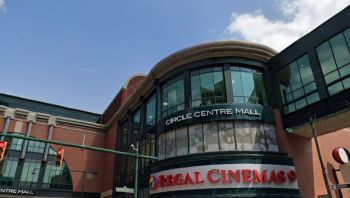MISHAWAKA, Ind.–The only piece of technology left behind on the moon from that first landing 50 years ago that is still functioning was designed by a Hoosier. The Lunar Laser Retroflector was invented by Dr. Jim Faller, born and raised in Mishawaka.
It helps measure the distance between the Earth and the moon, and was left behind on the Sea of Tranquility. The technology developed by Faller helped pave the way for GPS.
“A standard glass, if left to the radiation in outer space, would turn brown over time,” explained Dr. Todd Jaeger, with Heraeus, the company for which Faller developed the technology. “We want light to get there and make it back. If the glass is brown it absorbs within it.”
That’s why the purity of the reflector is so important in the equipment continuing to function and serve its purpose so well after 50 years, that the distance between the Earth and moon can be measured to within a millimeter.
“Without the deployment of the Apollo 11 Lunar Laser Reflector, we would not have GPS today,” said Jaeger. “If we hadn’t been able to measure this distance, verify Einstein’s Theory of Relativity, we wouldn’t have been able to apply that knowledge to the atomic clocks that are built into the GPS systems, to the positioning of said systems.”
Faller came up with the idea while he was a graduate physics student at Princeton University. Manufactured by Heraeus and Bendix Corporation.
The experiment was featured in a Season 3 episode of The Big Bang Theory sitcom (The Lunar Excitation). However, if you wanted to recreate the experiment at home and do your own laser ranging, the 3.5 meter high-powered telescope would cost you somewhere in the range of $10 million and take you days or even weeks to set up the necessary equipment.
“Although the 50th anniversary is a great achievement for us, I personally think one of the greatest achievements was when I was watching the Big Bang Theory and they actually referenced this experiment,” said Jaeger. That’s because this very complicated experiment, developed by a Hoosier, was now able to be understood in lay terms.
PHOTO: NASA












